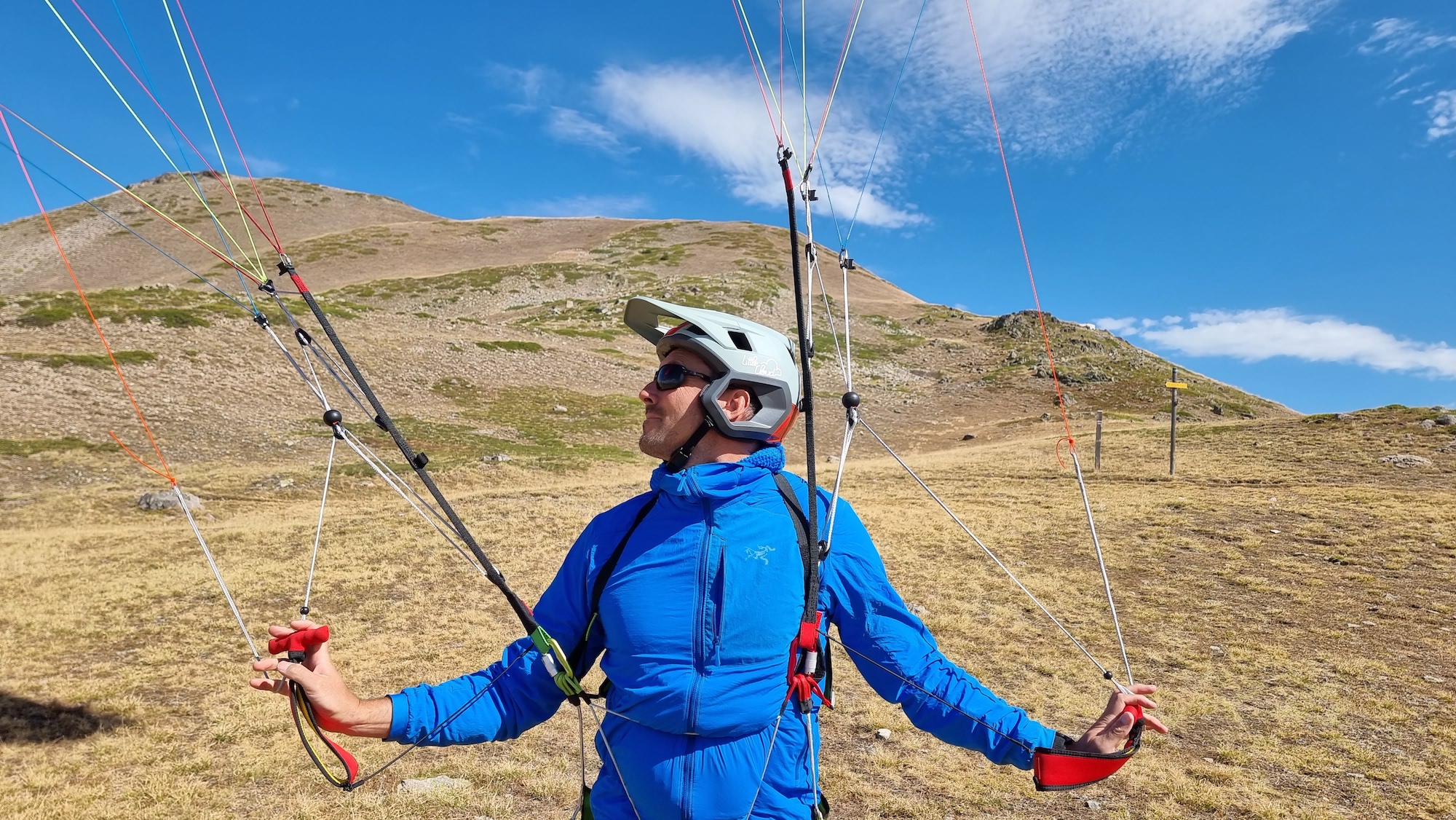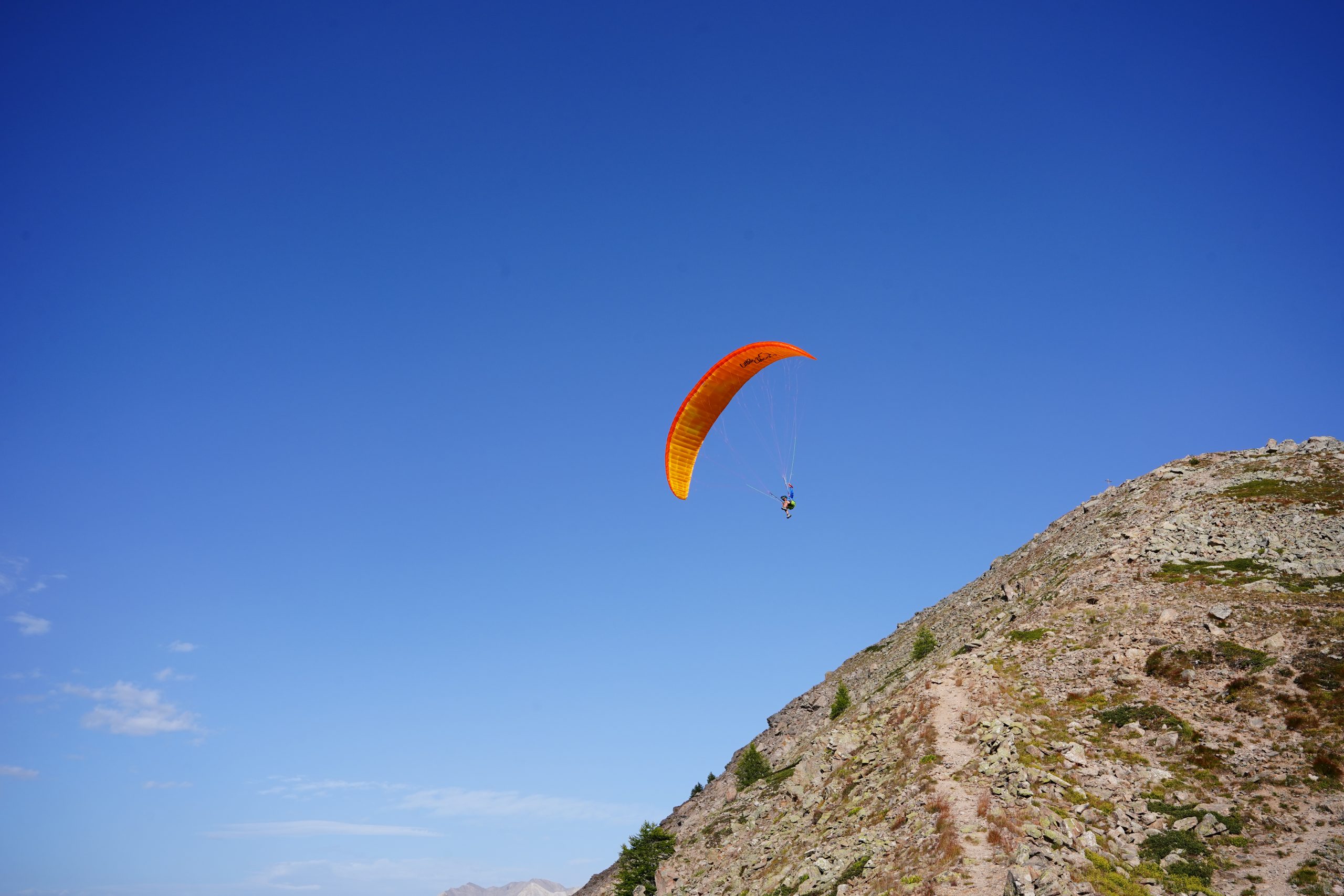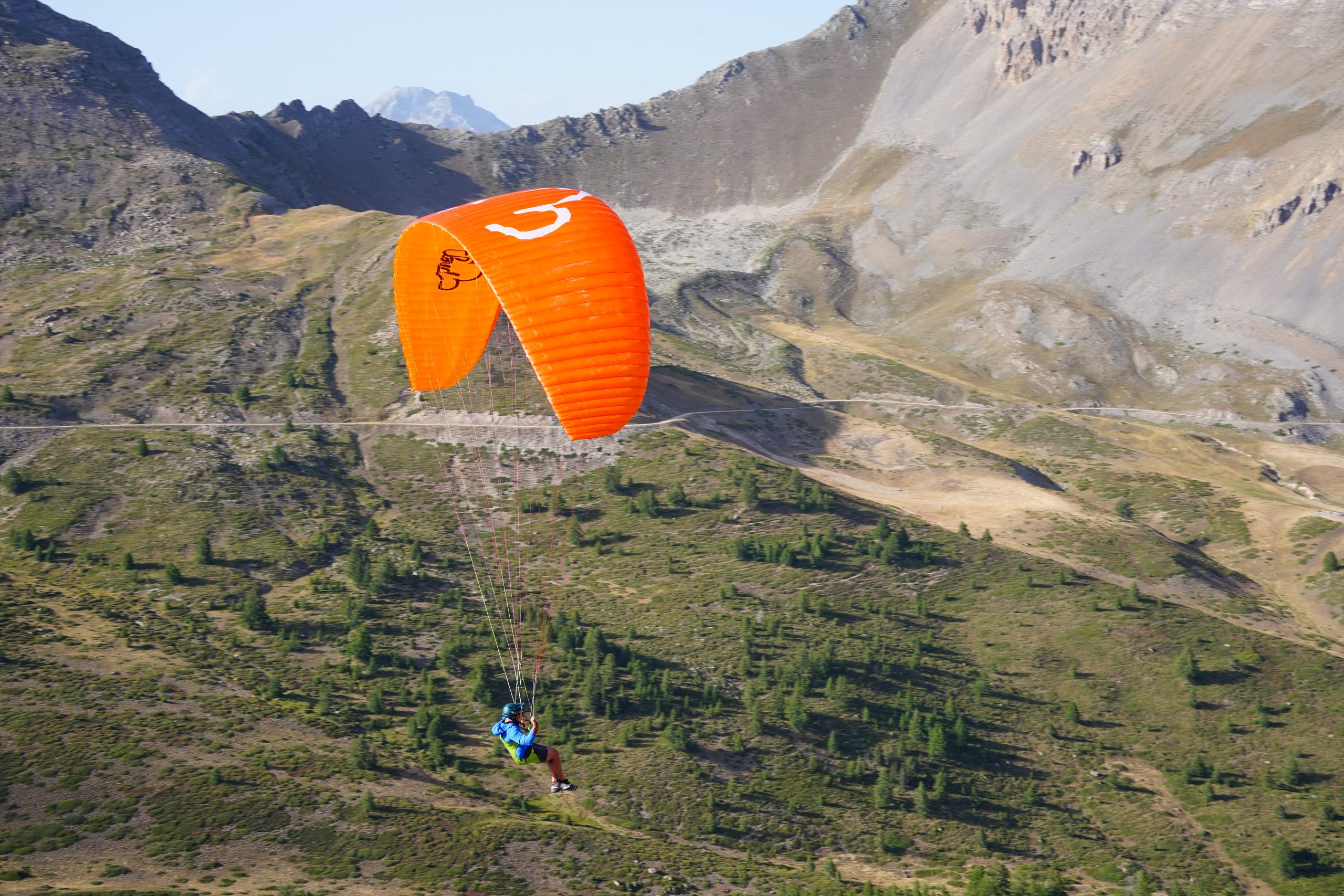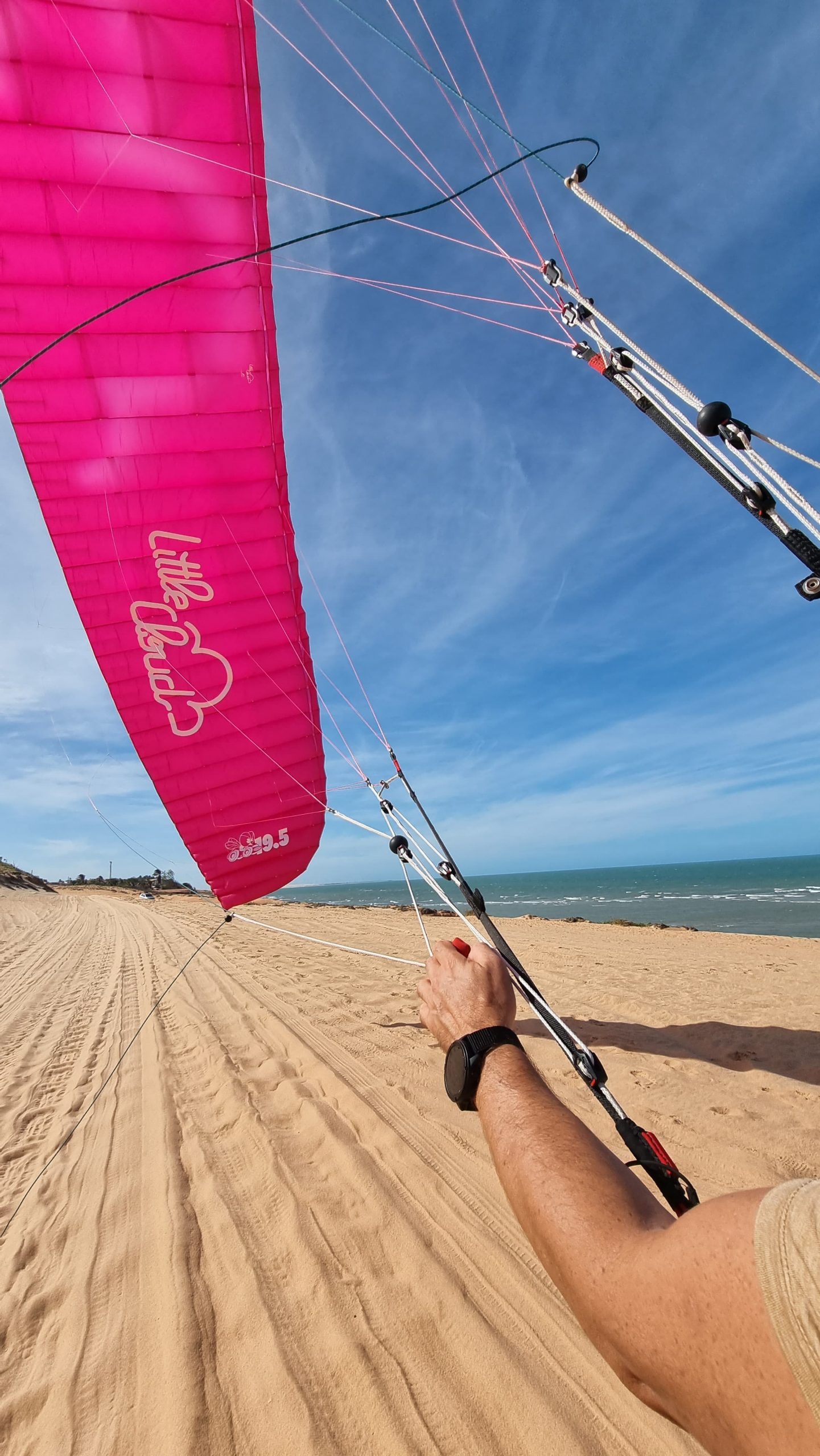These Kiterisers are a different way to change the angle of attack of your glider, just as you do with trimmers or speedbar, but the difference is that you adjust it instantly with your arms and without being able to pull the brakes-only when the angle of attack is low.
Effectively the brakes are moving along with A B and C on a defined scheme directed by the number and location of the pulleys.
In our system, A being static, B move 1/3rd of the travel of the C which move 1/3rd of the travel of the brake toggles.
The total throw up will be adjustable by a small stopper ball that you can lock via an Allen key along the C pulley travel.
As you can imagine, a 10m2 and a 25m2 don’t have the same chord therefore, the impact on the angle of attack (called AOA on the rest of this explanation) will be more important on a small chord with the same amount of “hands up”.
These Kiterisers are compatible on the list of LittleCloud gliders you can find on our webpage.

Reflex or not Reflex, that is the
question?
Now in the mind of a lot of pilots, this can only work with reflex profiles because this is what they’ve heard from other brands.
Fortunately for us, Marketing is not always the truth.
Just like with trimmers and speedbar, you can adjust the AOA of your glider through this device!
Reflex profile: Reflex is qualification for a profile that have tendency to increase its AOA when you leave it “free” (Cm positive).
This is helpful when you lower a lot your AOA to avoid negative incidence on it (which you can anyway get if you get hit by a strong turbulence) therefore reduce the collapse possibilities.
The amount of reflex is not a binary data, it’s an intrasect airfoil characteristics depending on a lot of factors on its design (intrados/extrados/camber…).
In no case, these profiles are 100% collapse proof. They will all at some stage, often without warning, generally at low AOA, and with pretty bad recovery behaviour most of the time (look at Paramotor crash videos on YouTube or so).
The stronger the reflex effect is the worse the efficiency is (so is the handling)!
The advantage is that you can use them a lower AOA, therefore fly faster than a regular profile.
My 20+ years of experience in foil kites design teach me that there are other ways to get stability (to a certain point of course)!
Inside pressure, tabs positions, canopy skin tensions, micro deformation of the canopy under certain circumstances…
And you know what, since day one, I’ve been working on making LC wing as pitch stable as possible, without using a strong reflex profile.
To LC opinion, being saved by the glider or worst, relying on it to be safe is a very inappropriate way of approaching the safety.
By essence a turbulence is invisible, moving, its intensity can’t be appreciated in advance. Of course, you can guess… But who never got surprised by a collapse…
I believe so that active piloting is a fundamental requirement for safety (for whatever flying discipline), especially when you fly close to the ground!
I believe that it’s important to have good feedback from your glider to understand the air and react (prevent the collapsing to happen) when needed.
So yes, flying a glider with Kiterisers system requires some experience!
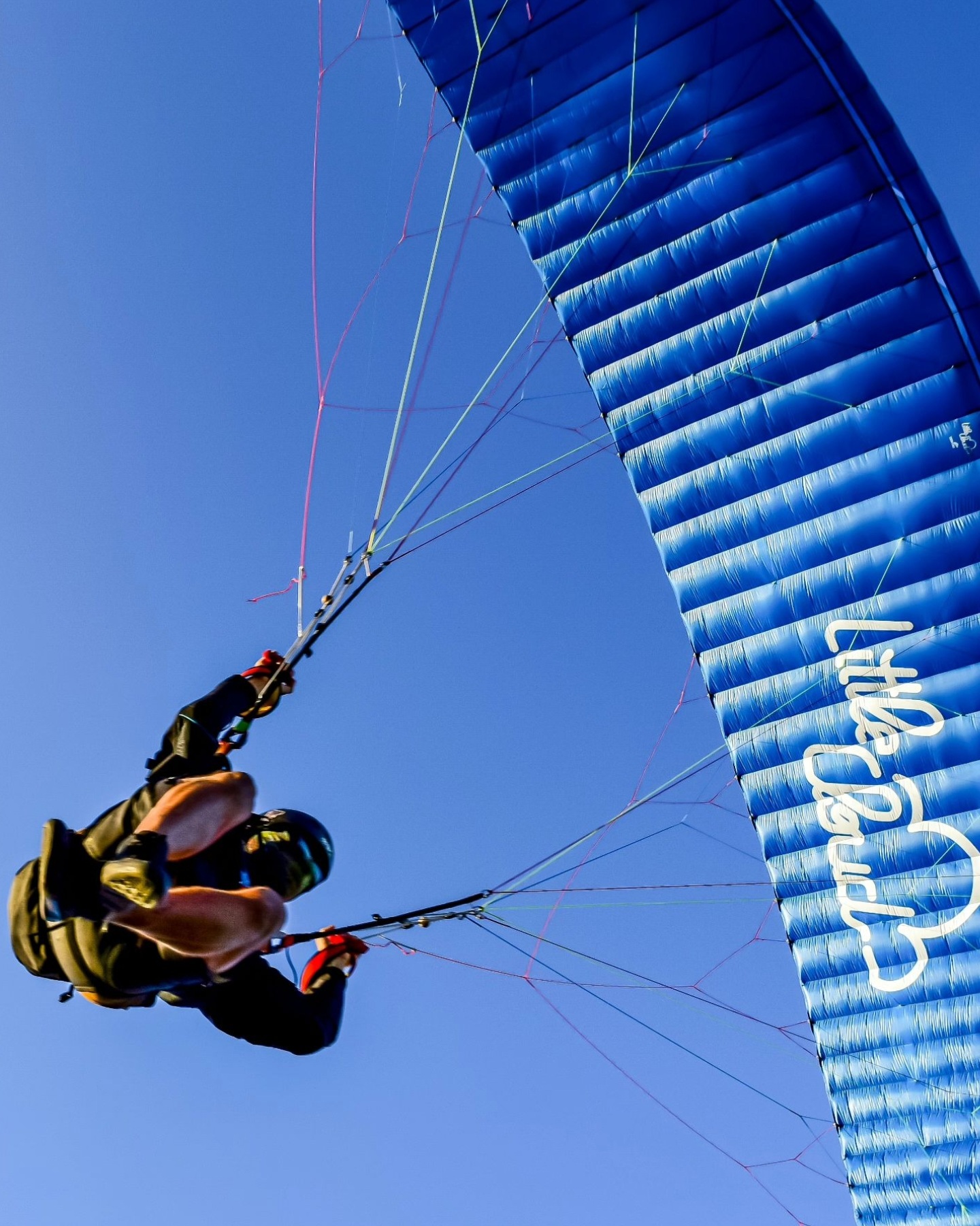
Sizing- wind range
Compared to our competitors on that discipline, we can use a size lower… our top end will be less but our low end will be much better.
It’s more fun, as the glider is more reactive, fast, and it’s also way more easy to handle in the wind!
At the end, the wind range is pretty similar, just offset to the bottom.
Limits of use/Warnings
These Kiterisers are designed for soaring, not for Speedflying/Speedriding (i.e. flying downhill close to the ground, full speed) nor acrobatics, nor Paramotor!
They are not recommended to pilots without experience in soaring a Minivoile.
Be aware that soaring in the mountains can be turbulent. If you know your spot and it’s not turbulent, no problem!
We don’t recommend you use it for thermaling.
Never try to take off with tail wind!
Avoid any turbulent air.
This system doesn’t change the flying mechanical rules nor the gravity!
Active Flying is a must to prevent any collapse to happen as no airfoil is collapse proof nor any pilots should rely on the canopy to push limits of physics.
You must practice on the ground before flying until you are 100% familiar with this new system. You should be able to rise/control/play/have no deflation with your wing above the head, without getting any sort of deflations.
You must strictly follow LittleCloud recommendations on the model’s compatibility and the adjustments of the brakes and throw up limiter.
Any flying outside this envelop is strictly the responsibility of the pilot and in no way LittleCloud/DLCO responsibility can be engaged.

Ronstan Orbit pulleys, the best ones available for sand use!
Dyneema 4mm rope
Full A leg in double Kevlar webbing for stiffness
Removable elastics
Ergo handles and T bar.
Peguet Maillons.
Tarif: 420€ TTC (Incl 20% sale TAX)

